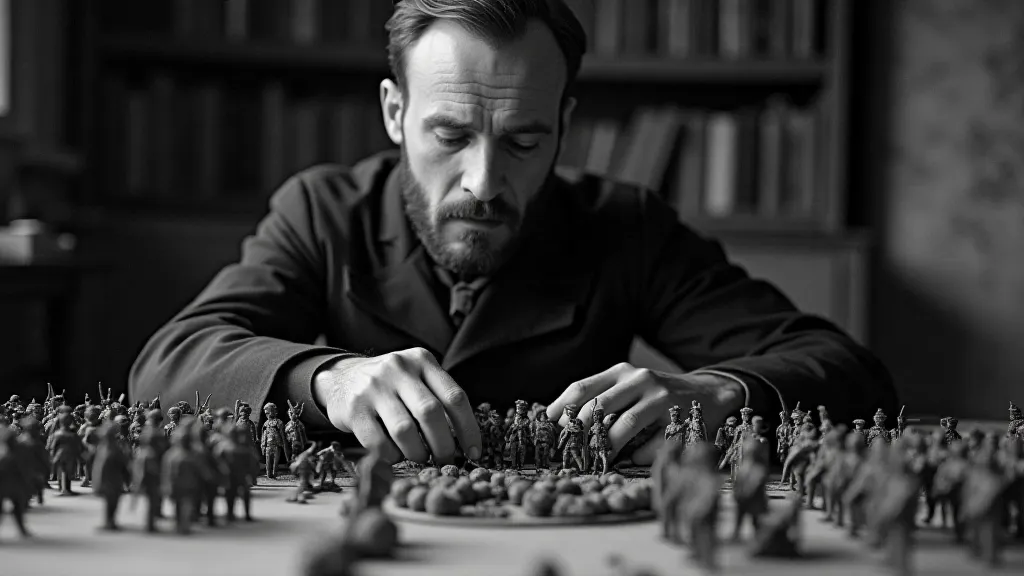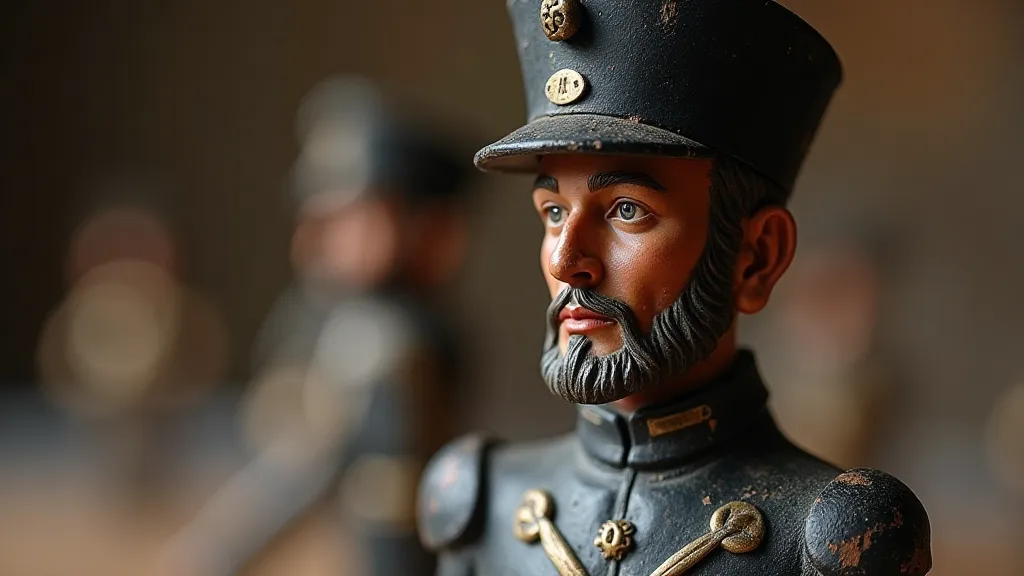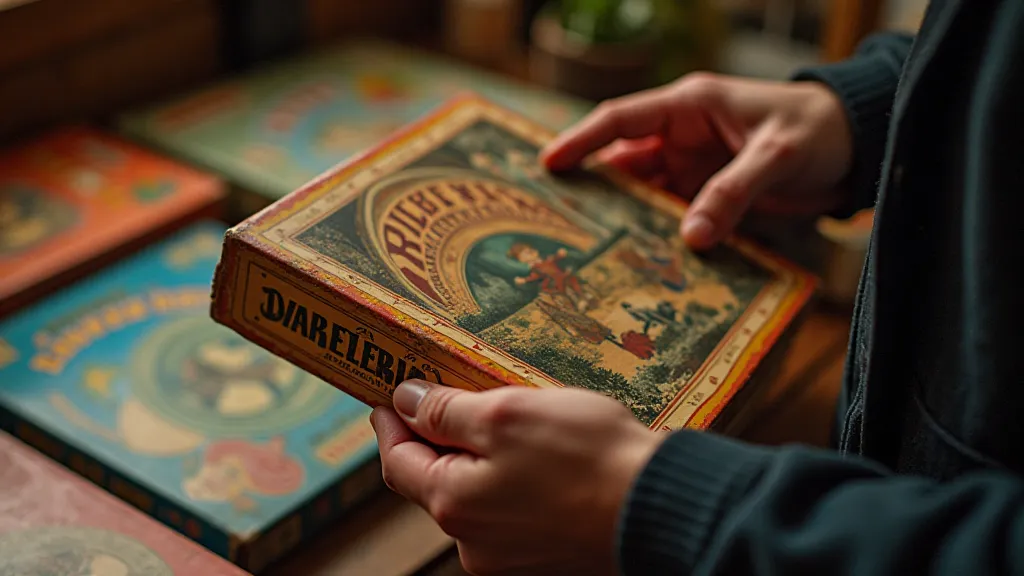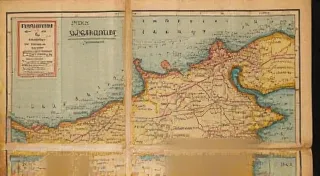The Cartography of Competition: Unveiling the Subversive Intentions of Early War Games
The scent of aged cardboard and faded ink. The satisfying click of wooden pieces. For many, collecting vintage board games evokes a comforting nostalgia, a return to simpler times spent around a table, strategizing with loved ones. But lurking beneath the veneer of wholesome family entertainment lies a far more complex history – a fascinating intersection of military strategy, geopolitical anxieties, and subtle acts of rebellion. These weren’t simply games; they were cartographies of conflict, meticulously designed to explore, predict, and even influence the realities of war.
My own fascination began with a battered copy of *Kriegsspiel* (War Game), a seemingly innocuous game box discovered in my grandfather's attic. He’s a quiet man, a retired history professor, and the simple act of him sharing the game felt significant, a handing down of knowledge and a glimpse into a world I hadn't known existed. The game itself, a chaotic jumble of miniature soldiers and abstract terrain, seemed initially impenetrable. But slowly, as I learned the rules and studied the accompanying pamphlets, a disturbing clarity began to emerge. This wasn’t just a game; it was a training tool, a simulator, and a window into the minds of military strategists grappling with the brutal realities of 19th-century warfare.
The Birth of Strategic Play: From Prussia to the World
The story begins in 19th-century Prussia, a nation striving to consolidate its power and influence amidst a volatile European landscape. Johann Gottlieb Ludwig Heim, a Prussian officer and educator, is widely credited with developing the first iteration of *Kriegsspiel* in the early 1800s. Before Heim, military training primarily relied on abstract lectures and limited field exercises. Heim’s innovation was radical: a wargame that allowed officers to realistically simulate battle scenarios, exploring tactics and anticipating enemy maneuvers within a controlled environment. The game's design was deliberately flawed, incorporating elements of randomness and incomplete information to mirror the uncertainties of real combat.

Initially met with skepticism and derision – many senior officers deemed it frivolous – *Kriegsspiel* gradually gained acceptance, particularly after its efficacy was demonstrated in several successful military campaigns. The Prussian army’s stunning victory over Austria in 1866, attributed in part to the widespread adoption of wargaming in officer training, solidified its importance. The game’s principles rapidly spread throughout Europe and beyond, influencing military thinking in countries like France, England, and even the United States. The development of these early games, however, was just one small element within a much larger and more complex evolution of game mechanics. Tracing these roots often reveals unexpected connections, like how elements found in early war games later influenced the design of seemingly unrelated games – a fascinating exploration of the evolution of game mechanics.
Beyond Entertainment: Subversive Intentions and Geopolitical Tensions
However, the influence of early war games extended far beyond the confines of military training. They became a fascinating lens through which to understand the anxieties and ambitions of the era. The games themselves often reflected the geopolitical tensions simmering beneath the surface of seemingly peaceful relations. The design of the terrain, the representation of armies, even the rules governing movement – all were subtly infused with the prevailing political narratives. Examining these details can reveal a surprising amount about the era's power dynamics.
Think about the early iterations of games simulating the Napoleonic Wars. They weren't simply about recreating historical battles; they were about exploring the factors that led to Napoleon's rise and fall, dissecting his strategies, and identifying vulnerabilities that future commanders could exploit. These games offered a unique form of political commentary, allowing players to engage in a symbolic re-enactment of international conflict, and in doing so, gain a deeper understanding of the underlying causes and consequences of war. The allure of controlling resources, manipulating populations, and ultimately, dominating the board was often a microcosm of the imperial ambitions that fueled the era. This quest for dominance also played a crucial role in shaping the design and marketing of other popular games, notably, the rise of Monopoly's empire, demonstrating the pervasive influence of competitive strategy in 19th and 20th century game design.
The Craftsmanship of Conflict: Appreciating the Details
Collecting vintage war games isn’t just about acquiring historical artifacts; it's about appreciating the craftsmanship and ingenuity of their creators. Early games were often handcrafted, with meticulous attention paid to every detail. The wooden pieces, often carved from hardwoods, were exquisitely painted to represent different military units. The terrain boards were painstakingly rendered to capture the nuances of the landscape. The rulebooks, often accompanied by detailed maps and diagrams, were testaments to the authors’ expertise and dedication.
The condition of these games can vary greatly, reflecting their age and usage. Finding a game in pristine condition is a rare and coveted prize, but even those bearing the marks of time – faded colors, worn edges, and missing pieces – possess a unique charm and character. The imperfections tell a story, hinting at the countless hours of play and the passionate engagement they once inspired. Beyond the physical artifacts, the history of these games often evokes a sense of nostalgic longing – a feeling of connection to past generations and the memories they created. This theme of remembrance and the lingering presence of forgotten moments is also beautifully captured in the stories of the phantom children of vintage board games.

Restoration and Preservation: Honoring the Legacy
Restoring vintage war games is a delicate process. The goal isn't to erase the signs of age, but rather to stabilize the game and protect it from further deterioration. Simple steps like cleaning the board, repairing minor tears, and replacing missing pieces can significantly enhance the game’s appearance and playability. However, it’s crucial to avoid any irreversible alterations that could diminish its historical value. Consulting with experienced game restorers is often advisable, particularly when dealing with rare or valuable games.
For collectors, the real joy lies not just in owning these historical artifacts, but in sharing their stories with others. Discussing the game's history, explaining its rules, and demonstrating its strategic depth – these are all ways to keep the legacy alive and to inspire a new generation of enthusiasts. The artistry involved in these early games extended beyond their construction; the illustrations themselves were often masterpieces of their time. Examining these images provides a fascinating glimpse into the aesthetics and artistic conventions of the era, revealing a distinctive style that is now largely lost. This focus on visual artistry and the enduring appeal of early board game illustrations provides a compelling window into the lost art of board game illustration.

The cartography of competition, as embodied in these early war games, offers a powerful reminder of the complex relationship between play and power, entertainment and strategy. They are more than just games; they are windows into the minds of generations past, offering a unique and fascinating perspective on the history of conflict and the enduring human desire to understand and control the world around us. Collecting them is more than just accumulating objects; it's safeguarding a vital piece of our shared cultural heritage. The evocative nature of these games taps into deeper human emotions, reminding us of the joys and sorrows, the triumphs and failures, of those who came before us. These games aren't simply historical artifacts; they are tangible links to our past, allowing us to connect with the experiences and aspirations of those who shaped our world. Furthermore, the very act of preserving and appreciating these games carries a responsibility – a commitment to ensuring that future generations have the opportunity to learn from them and to be inspired by their enduring legacy. This responsibility extends beyond the physical preservation of the games themselves, encompassing a broader effort to educate and engage the public in their history and significance. By sharing these stories, we can ensure that these treasures continue to enrich our lives and to illuminate the path toward a more peaceful and prosperous future.





